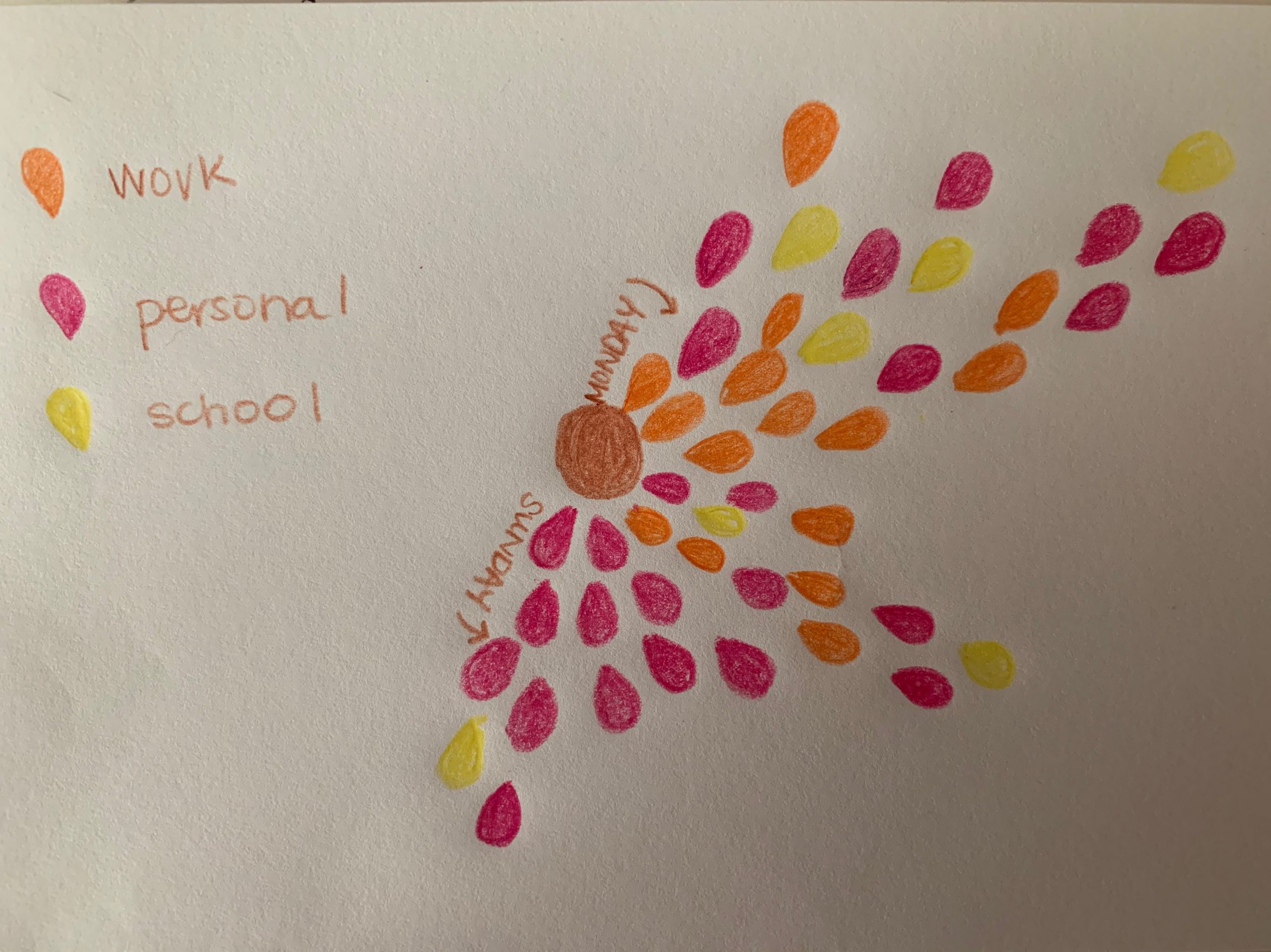
This week it felt like a natural step to track anxiety as the final visualisation. As a student, the time leading up to the end of the year can be filled with excitement about what’s next, but it can also be filled with stress and anxiety around studying for exams and doing well.
What I wanted to highlight visually in this visualisation was the weight and continuous cycle you can find yourself in once you become anxious of something… one thing can often lead to many others piling on. For me, the early part of the week was work focused and the end of the week more personal focused. Sunday scaries anyone?
When thinking about how this relates to governance, is collecting data on anxiety? As a non-educator, my first instinct is to imagine that it’s more useful to think about from both a learning and teaching perspective.
One theme that has stood out in this governance block is that data collected is collected with the end result in mind. An outcome ‘should‘ prove or disprove something so that action (i.e. policy and governance) can be created. Often, it can be forgotten that the itself data in isolation, however, can be personal and individualistic. Tracking anxiety as an example is an emotion that likely has different meanings to different individuals. It’s difficult to track because we cannot determine the meaning in absolutes as we can for a maths equation. This is one reason that today, tracking anxiety may not be valuable in terms of governance and policy.
When combined for the purpose of analysis, the collection of data has a chance becoming an average. The average then in turn is what the policy is based on. An important note is that tracking something ambiguous like anxiety, can have many causes. For example, while it may be fair to say that most students feel anxious about exams, students may feel that anxiety as a result of very different reasons, e.g. a fear of failure, a desire to make parents proud, or even a recent breakup or other personal matter that has significantly impacted their ability to focus on studying.
This may or may not impact student grades. For the student looking at the grade, they can relate and understand the correlation. However, if those grades are used to measure a teacher’s performance, a school administrator would see the ‘average‘ picture. The assumption here is that there are enough students to provide data that lessens the extremes. Another reason why I considered tracking anxiety was because this past pandemic year, I can imagine anxiety had an overall impact on the education system because students found themselves in an unknown and uncertain time. It could have an impact on governance and policy.
If we could accurately quantify, describe and standardise anxiety to collect data on it, this may prove valuable from a governance and policy perspective in the future, if we face a similar situation again. A likely scenario is using technology to do this as artificial intelligence models continue to be created and trained for the purpose of tracking emotions.